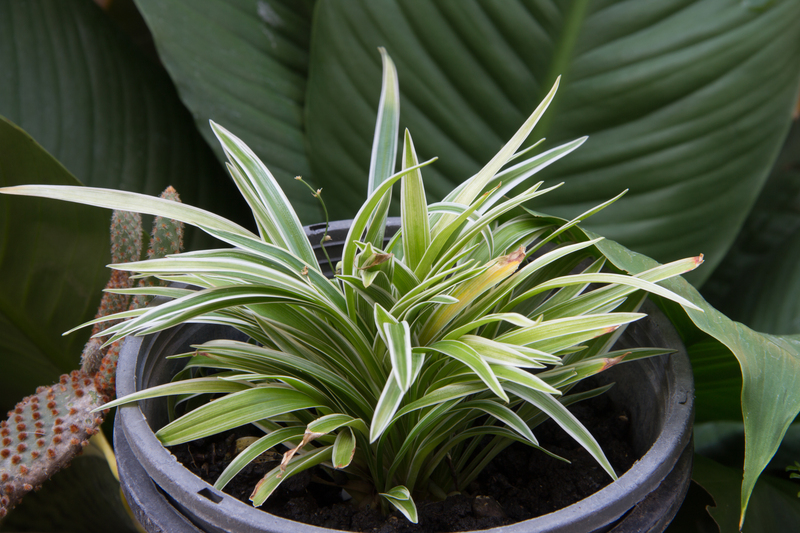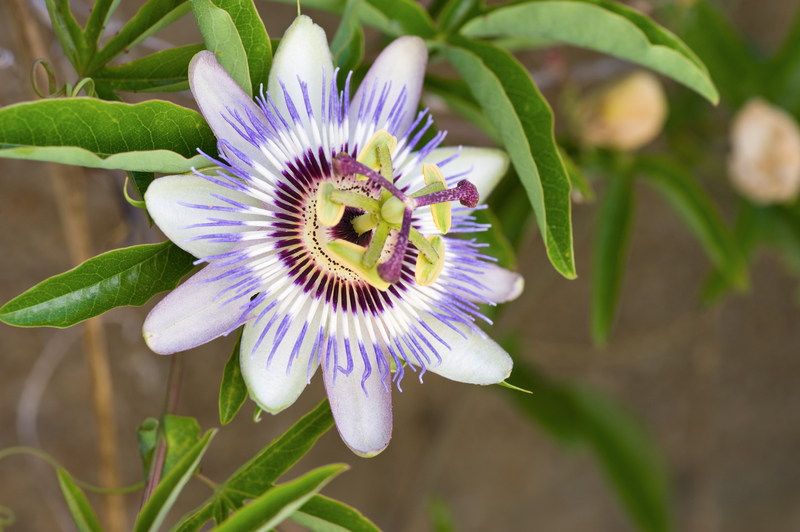The Journey to a Sustainable Herb Garden
Posted on 24/06/2025
The Journey to a Sustainable Herb Garden
Dreaming of lush green leaves, aromatic scents, and a bounty of natural flavors at your fingertips? Embarking on the journey to cultivate a sustainable herb garden offers more than just fresh culinary ingredients--it also supports biodiversity, reduces your carbon footprint, and enriches your connection with the environment. Whether you're a seasoned gardener or a novice, this comprehensive guide leads you through every step in creating an eco-friendly, thriving, and enduring herb oasis in your own space.
Why Opt for a Sustainable Herb Garden?
Sustainability is more than a buzzword--it's a responsible and fulfilling approach to gardening that prioritizes the long-term health of our ecosystems, our own wellbeing, and future generations. Cultivating a sustainable herb garden helps to:
- Minimize chemical use, reducing harmful run-off and preserving soil health
- Encourage biodiversity, supporting local pollinators and beneficial insects
- Reduce waste through composting and smart water management
- Lower your carbon footprint by growing your own food and reducing reliance on packaged herbs
- Reconnect with nature and cultivate mindfulness
The journey to a sustainable herb garden begins with understanding what makes gardening practices sustainable and making conscious choices every step of the way.

Planning Your Eco-Friendly Herb Garden
Good planning lays the foundation for a productive and environmentally conscious herb space. Consider these factors before planting:
1. Choosing the Right Location
Select a site that receives ample sunlight (most herbs thrive with 6-8 hours daily), offers good drainage, and is safe from harsh winds or excessive shade. For small spaces, think vertically: window sills, balconies, and patios can also support compact sustainable herb gardens.
2. Selecting Herbs for Sustainability
- Native herbs: Grow species that are indigenous to your region. These are adapted to local conditions, support native pollinators, and typically require less water and attention.
- Perennial herbs: Focus on varieties that return year after year, such as oregano, thyme, sage, rosemary, and chives. Perennials reduce planting needs and promote healthy soil structure.
- Pollinator-friendly herbs: Include plants like lavender, basil, mint, and dill to attract bees, butterflies, and beneficial insects.
3. Designing for Sustainability
- Companion planting: Grow mutually beneficial herbs together. For example, basil and tomatoes thrive side-by-side, as do chives and carrots.
- Succession planting: Plan for staggered plantings to optimize yield and soil health.
- Efficient use of space: Layering plants with varying heights maximizes light capture and protects more delicate herbs.
Building Your Sustainable Herb Garden
After thoughtful planning, the next step is transforming your vision into a living green space using eco-conscious materials and techniques.
1. Sustainable Bed and Container Choices
- Raised beds: Construct with reclaimed wood, untreated and rot-resistant lumber such as cedar, or recycled materials.
- Containers: Repurpose household items (old barrels, pots, or tins) or opt for biodegradable pots made from coconut coir, rice husk, or recycled paper.
- Ensure all containers offer adequate drainage to prevent root rot and anaerobic soil conditions.
2. Using Organic, Regenerative Soils
The foundation of every sustainable garden is healthy, living soil. Opt for:
- Compost-rich soil blends, incorporating homemade compost or worm castings
- Mulching with straw, shredded leaves, or grass clippings to conserve moisture and suppress weeds
- Soil testing to assess and balance essential nutrients without synthetic fertilizers
Healthy soil acts as a reservoir for water and nutrients, improves resilience to pests, and sequesters carbon from the atmosphere.
3. Smart Water Management
- Employ drip irrigation or soaker hoses to deliver water directly to roots and minimize evaporation
- Collect rainwater with barrels or cisterns for irrigation needs
- Water early in the morning or late afternoon to reduce loss from heat and sun
- Mulch generously--mulching significantly reduces surface evaporation and weeds
Cultivating and Maintaining a Sustainable Herb Garden
Growing herbs sustainably is a continuous process of observation, care, and stewardship. Here's how to keep your plants--and the environment--happy and healthy:
1. Natural, Non-Toxic Pest Control
- Physical barriers: Use row covers or cloches to protect young plants from pests.
- Encourage beneficial insects: Ladybugs, lacewings, and spiders keep aphids and other pests at bay. Planting yarrow, dill, and fennel attracts these garden allies.
- Manual methods: Hand-pick pests or spray leaves with diluted organic soap solutions when necessary.
- Companion planting: Integrate pest-repelling plants like marigolds or nasturtiums among your herbs.
Sustainable herb gardens rely on balance, avoiding the use of synthetic chemicals that can disrupt nature's intricate web.
2. Responsible Fertilization Techniques
- Top-dress with organic compost, worm castings, or well-rotted manure as needed instead of chemical fertilizers
- Rotate plantings each season to avoid soil nutrient depletion
- Use homemade plant teas (like comfrey or nettle infusion) to gently boost nutrition
Fertilize sparingly--herbs favor lean soils and can lose their potent flavors if overfed.
3. Composting for a Closed-Loop System
- Compost herb trimmings, kitchen scraps, coffee grounds, and yard waste
- Create a small-scale worm bin (vermicomposting) for compact spaces
- Return finished compost to your garden beds to feed soil life and reduce landfill waste
4. Pruning and Harvesting Sustainably
- Harvest leaves in the morning, pinching back growth to encourage bushiness
- Never cut more than one-third of a plant at a time--allow the plant energy to rebound
- Dry or freeze surplus herbs for use year-round, minimizing waste
Advantages of Growing a Sustainable Herb Garden
The rewards of maintaining a sustainable herb garden extend far beyond visual appeal and fresh flavors. Here are significant benefits of your eco-garden journey:
- Self-sufficiency: Access to fresh, organic herbs whenever you need them
- Wellbeing: Gardening reduces stress, increases physical activity, and fosters mindfulness
- Environmental stewardship: Every sustainable herb garden supports pollinators, improves microclimates, and sequesters carbon
- Learning and education: Gain hands-on knowledge of plant lifecycles, soil ecology, and natural systems
- Cost savings: Growing your own herbs reduces grocery costs and packaging waste
Common Herbs for Sustainable Herb Gardens
If you're seeking inspiration for your sustainable herb garden, consider these popular choices favored for their minimal input and maximum returns:
- Basil: Fast-growing, ideal for fresh summer flavor
- Mint: Hardy and spreads easily--perfect for teas and desserts
- Chives: Perennial, pest-resistant, and beautiful blossoms
- Thyme: Drought-tolerant and attractive ground cover
- Oregano: Robust and energizing for Mediterranean dishes
- Sage: Perennial with lovely foliage, attracts pollinators
- Parsley: Biennial, great nutrient content
- Lavender: Aromatic, edible, and a pollinator magnet
- Cilantro: Quick to grow; both leaves and seeds (coriander) are useful in cooking
Urban and Small-Space Herbal Sustainability
Living in the city or with limited space? You can still embark on your own journey toward a sustainable herb garden. Here's how:
- Vertical gardens: Wall-mounted planters or stacking pots allow for a bounty in a tiny footprint
- Windowsill planters: Even a sunny window provides enough light for basil, thyme, parsley, and cilantro
- Container gardening: Repurpose buckets, bags, or large coffee cans for compact, moveable gardens
- Community gardens: Share space, resources, and expertise with neighbors to build a more resilient local food system
Eco-Friendly Gardening Tools and Resources
- Hand tools over gas or electric powered tools
- Rain barrels and drip irrigation kits for water conservation
- Biodegradable seed starting pots and organic seed options
- Gardening gloves and aprons made from sustainable materials
- Books and online communities focused on permaculture and regenerative gardening

How to Make Your Herb Garden More Sustainable
On your journey to a sustainable herb garden, each small improvement counts. Consider these additional sustainable gardening practices for enduring success:
- Plant diversity: Grow a wide variety of herbs and flowers to foster resilience and support wildlife
- Reduce plastic use: Choose tools, supports, and labels made from natural or recycled materials
- Save your own seeds: Harvest and store seeds from your healthiest plants to promote genetic diversity and self-sufficiency
- Practice mindful watering: Only water when plants show signs of drought stress--most herbs dislike "wet feet"
- Observe, adapt, and share: Learn from nature, celebrate your successes, and share your knowledge with the community
Conclusion: Celebrate the Journey to a Sustainable Herb Paradise
Creating and tending a sustainable herb garden is both art and science--a gratifying adventure rooted in stewardship and creativity. By choosing eco-friendly methods, respecting natural systems, and cultivating with intention, your herb oasis will nourish your table, support local ecosystems, and inspire a greener tomorrow.
Remember, the journey to a sustainable herb garden is ongoing. With every seed planted, every bee welcomed, and every harvest shared, you're participating in the age-old cycle of care that binds gardener and earth. Start your sustainable herb gardening journey today, and enjoy fragrant, flavorful rewards for seasons to come!
Additional Resources
- Royal Horticultural Society: Growing Herbs Sustainably
- Gardener's Supply: How to Start a Herb Garden
- Permies: Forums on Permaculture and Regenerative Gardening
Embark on this rewarding journey and watch as your sustainable herb garden flourishes--one leaf, one bloom, one harvest at a time.

